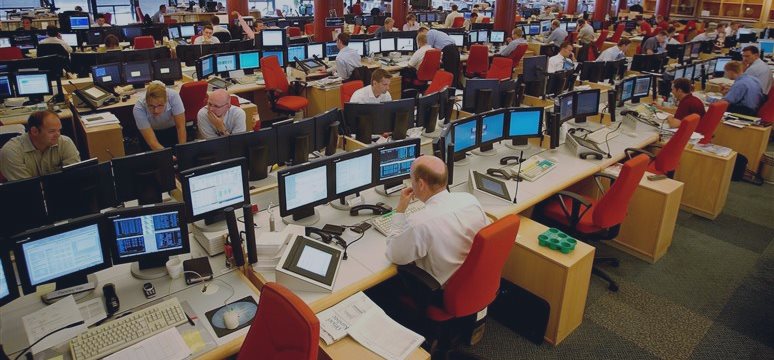- What is price action trading?
- The basics of reading charts
- Support and resistance
- Basic set-ups and stop placement
- Two examples of trades from the forex market
What is Price Action?
Price action is a particular
methodology employed by traders, based on the observation and
interpretation of price action, usually through the use of candlestick
or bar charts. The price action style of trading is usually
characterized by clean charts, without indicators, with the explanation
that indicators are themselves interpretations of the historical
movements of price, which don't contain any information or predictive
power that isn't available from the charts themselves. Nonetheless,
some traders include basic indicators, such as exponential moving
averages or average true range to augment their charts or to provide
confluence. The attitude of the price action trader is that the
interpretation of price movements can provide an edge, a possibility of
being more right than wrong in their predictions about the future
behavior of price. This edge is possible from making trades that are
informed by the observation of key price levels (demarcated as support
and resistance lines), the recognition of common, reliable price action
patterns, the use of trading orders with built-in stop loss levels, and a
systematic trading strategy.
The basics of reading candles and charts:
Since candlestick and bar charts are the fundamental interface of the
price action trader, the most basic unit is the candle or bar itself.
Candles sum up the price action over a set period of time: on a 5 minute
chart, each candle represents 5 minutes of price behavior, whereas on a
daily chart, only one candle is produced per day. The body of the
candle constitutes the range between the open price and close price,
whereas the wicks or shadows of the candle indicate the high and low
over that period of trading. Various color schemes are used to determine
whether the price movement represented by the candle is bullish
(increasing in price) or bearish (decreasing in price); bullish candles
are usually white, blue, or green, whereas bearish candles are usually
black or red.
Longer candle bodies demonstrate strong momentum and decisive market
behavior in the movement from open to close; longer shadows, however,
demonstrate increased volatility, since some prices were reached during
the time period but ultimately excluded from the range between open and
close.
Smaller candles can indicate the market's indecision, disinterest, or a balance between bullish and bearish forces
There are two important, rudimentary patterns that play out over at least 2 candlesticks:
- An outside bar is a bar with a higher high and a lower low than the previous candlestick, often with a body that also encompasses the price range of the previous bar's body; an alternative variation is the engulfing bar, which simply has a higher open and a higher close, regardless of the candle's shadows or wicks.
-
By contrast, an inside bar is a bar, or series of bars, with a high and
low encompassed by the preceding candle; in this case, the variation is
the harami, a bar or series of bars with an open and close within the
range of the bar preceding it
Basic Set-ups and Stop Placement
Most price action traders place buy or sell stop orders with a
pre-determined stop loss level, and a take profit or target level. The
buy or sell stop sets the level that price much reach for the order to
be filled; the stop loss level sets the margin of loss that a trader
will accept before closing the position; the take profit level sets the
level at which to automatically close a successful position.
Basically, you determine risk based on where you are placing your stop,
and then determine your target with regard to this risk level; commonly,
traders will aim for at least a 1:3 risk to reward ratio, although
scalpers and those who trade on shorter time frames often have to accept
smaller ratios.
The buy or sell stop, or entry level, is typically set at a significant
support or resistance level so that it will only be filled when price
has broken definitively in the desired direction; by setting strategic
entry levels in their orders, traders can ensure that they enter trades
with the momentum of the market.
Perhaps the most basic set-up is the pinbar, which, if you remember has
an open and close within the previous bar, and a wick at least 3 times
the length of the candle body, protruding beyond the levels of prior
bars.
The long wick and short body implies that traders have made a strong
attempt to push price in one direction, but price has returned to
earlier levels, often indicating the possibility of a reversal in trend
direction.



